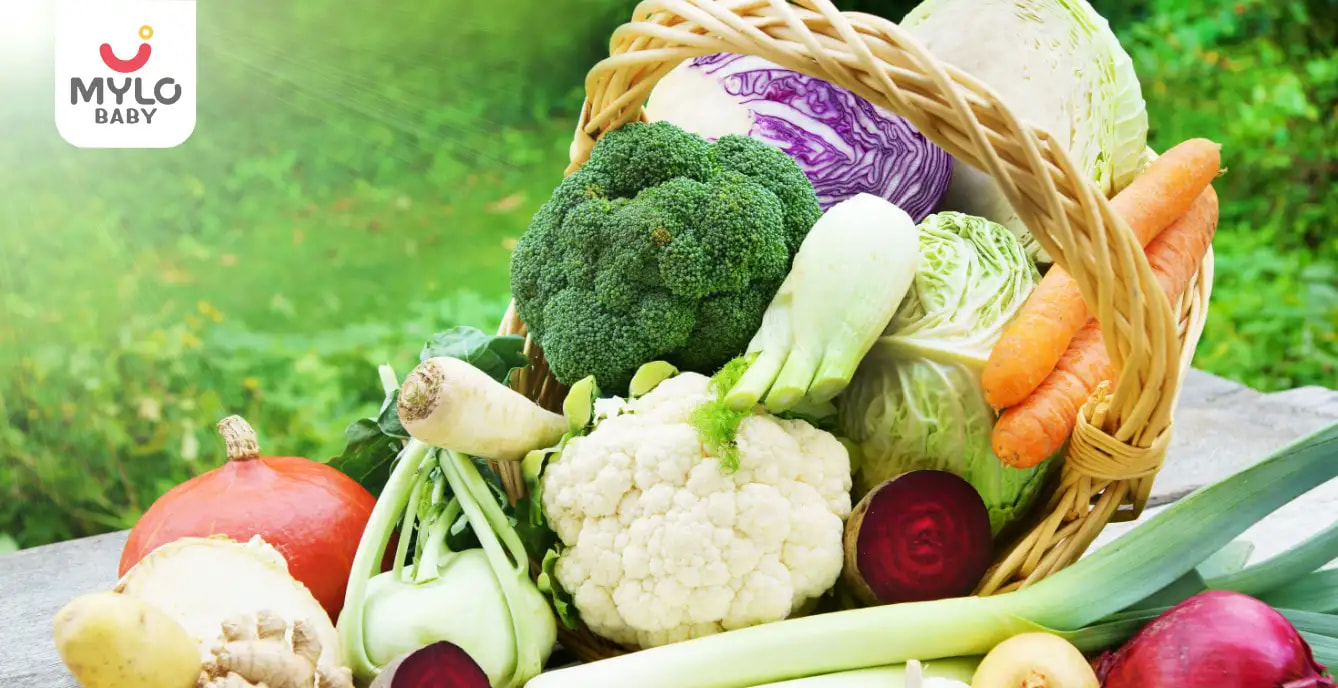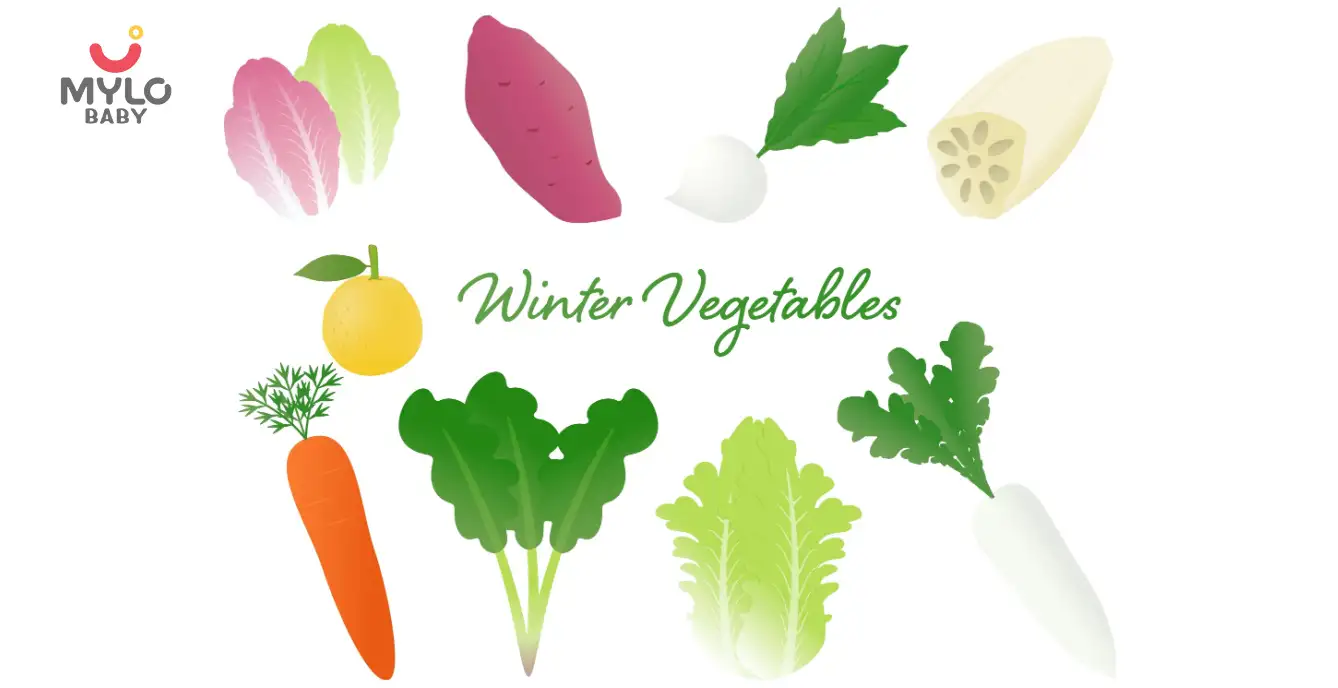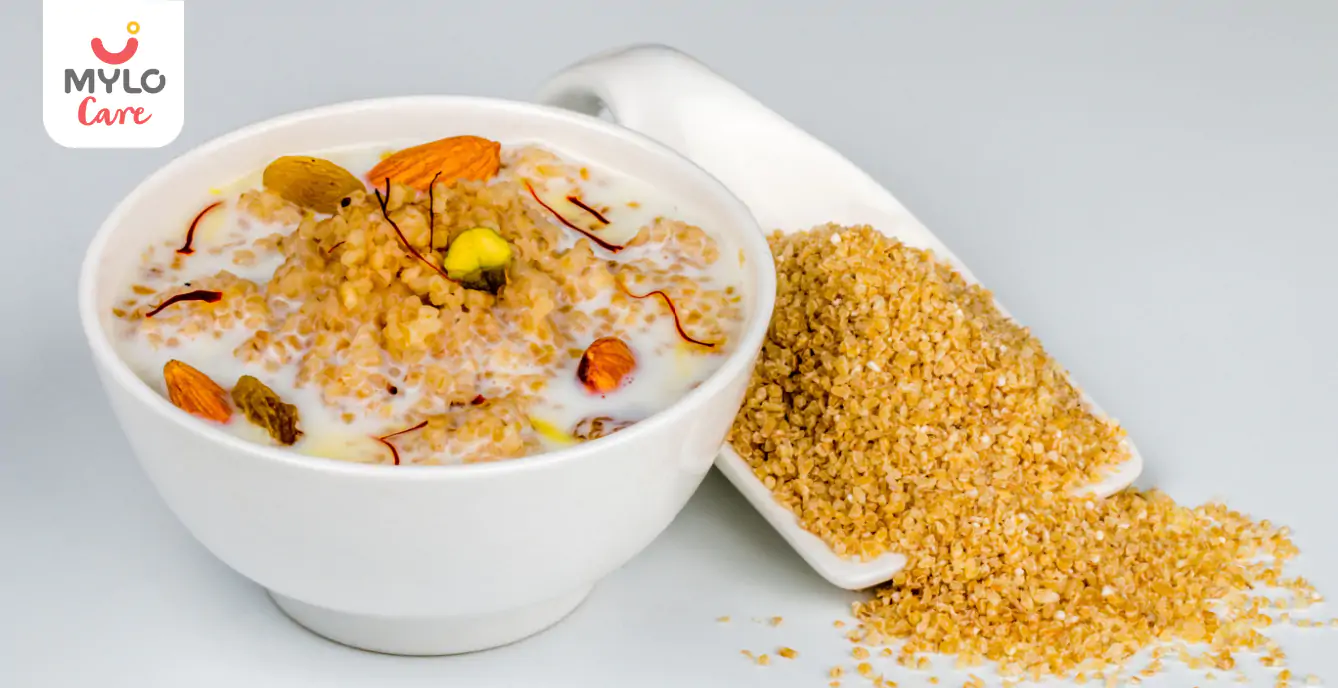Home

The A-Z Guide to Identifying Winter Vegetables for Kids
In this Article

Baby Care
The A-Z Guide to Identifying Winter Vegetables for Kids
Updated on 29 January 2024
Winter is here, and it's the perfect time to introduce your little ones to winter vegetables. From vibrant carrots to hearty cabbage, there's a whole alphabet of nutritious and delicious winter veggies waiting to be discovered! In this article, we will not only learn winter season vegetables name but also discuss tips to make learning them easier for kids and share a winter vegetables chart.
What are winter vegetables?
Winter season vegetables are a diverse group of crops that thrive in colder temperatures. They are typically sown in the fall and harvested during the winter months. These vegetables are known for their hardiness and ability to withstand frost and low temperatures. Winter veggies are not only delicious but also packed with essential nutrients, making them an excellent addition to any child's diet.
Winter vegetables name
Here is a list of winter vegetables in India that you can introduce to your kids:
1. Broccoli
Broccoli is a nutrient-rich vegetable that is rich in vitamins A, C, and K. It is also a great source of fiber and antioxidants. Broccoli can be steamed, roasted, or added to soups and stir-fries.
2. Cabbage
Cabbage is a versatile vegetable that comes in various colors, including green, red, and purple. It is packed with vitamin C and fiber, making it an excellent choice for boosting the immune system and improving digestion.
3. Carrots
Carrots are a popular root vegetable with a vibrant orange color. They are rich in beta-carotene, which is converted into vitamin A in the body. Carrots can be eaten raw, steamed, or added to stews and salads.
4. Cauliflower
Cauliflower is a cruciferous vegetable that is low in calories but high in vitamins and minerals. It can be roasted, mashed, or used as a substitute for rice or pizza crust.
5. Spinach
Spinach is a leafy green vegetable that is packed with nutrients like iron, calcium, and vitamins A and C. It can be eaten raw in salads, sautéed as a side dish, or added to smoothies for a nutrient boost.
What are the benefits of winter season vegetables?
The list of winter vegetables is a long one but so is their list of benefits such as:
Boosting the immune system: Winter vegetables are rich in vitamins and minerals that help strengthen the immune system. Vitamin C, in particular, is known for its immune-boosting properties and can help prevent colds and flu.
1. Improving digestion
Many winter veggies, like cabbage and broccoli, are high in fiber, which aids in digestion and prevents constipation. Including these vegetables in your child's diet can promote a healthy digestive system.
2. Providing essential nutrients
Winter vegetables are a great source of essential nutrients like vitamins A, C, and K, as well as minerals like iron and calcium. These nutrients are crucial for growth and development in children.
3. Supporting healthy weight management
Winter season vegetables are low in calories and high in fiber, making them a great addition to a balanced diet. They can help children feel full and satisfied without consuming excess calories.
4. Promoting overall health
The combination of vitamins, minerals, antioxidants, and fiber found in winter veggies can have a positive impact on overall health. They can help reduce the risk of chronic diseases like heart disease, diabetes, and certain types of cancer.
You may also like: The A-Z Guide to Identifying Root Vegetables Names for Kids
15 winter vegetables in India
There is a wide variety of winter season vegetables in India, including:
1. Radish
Radish is a root vegetable that comes in various colors, including white, pink, and purple. It is known for its crisp texture and peppery flavor.
2. Turnip
Turnip is a root vegetable with a mild and slightly sweet flavor. It can be eaten raw or cooked and is often used in stews and soups.
3. Beetroot
Beetroot is a root vegetable known for its vibrant purple color. It is rich in antioxidants and can be roasted, boiled, or grated raw into salads.
4. Potato
Potato is a starchy vegetable that is a staple in many households. It can be boiled, mashed, roasted, or fried, making it a versatile ingredient.
5. Sweet Potato
Sweet potato is a root vegetable that is high in fiber and vitamins A and C. It can be baked, boiled, or roasted and makes a delicious and nutritious addition to meals.
6. Green Peas
Green peas are a legume that is rich in protein and fiber. They can be added to soups, stews, or enjoyed as a side dish.
7. Fenugreek
Fenugreek is an herb commonly used in Indian cooking. It has a slightly bitter taste and is often added to curries, stews, and pickles.
8. Garlic
Garlic is a pungent bulb vegetable that is used for its flavor and medicinal properties. It can be added to a variety of dishes to enhance their taste.
9. Onion
Onion is a staple ingredient in many cuisines. It adds flavor to dishes and can be eaten raw or cooked.
10. Ginger
Ginger is a root vegetable with a spicy and aromatic flavor. It is commonly used in Indian cooking and is known for its medicinal properties.
11. Cauliflower
Cauliflower is a versatile vegetable that can be used in a variety of dishes. It can be roasted, mashed, or used as a substitute for rice or pizza crust.
12. Carrots
Carrots are a popular root vegetable with a vibrant orange color. They are rich in beta-carotene, which is converted into vitamin A in the body.
13. Cabbage
Cabbage is a versatile vegetable that comes in various colors, including green, red, and purple. It is packed with vitamin C and fiber.
14. Broccoli
Broccoli is a nutrient-rich vegetable that is rich in vitamins A, C, and K. It is also a great source of fiber and antioxidants.
15. Spinach
Spinach is a leafy green vegetable that is packed with nutrients like iron, calcium, and vitamins A and C. It can be eaten raw in salads or cooked as a side dish.
You may also like: The A-Z Guide to Identifying Green Vegetables Names for Kids
Winter vegetables chart
To make it easier for children to identify and remember the list of winter vegetables, here is a handy chart:

Tips to make learning winter season vegetables name easy for kids
Learning winter vegetables name can be fun and educational for kids. Here are seven tips to make the process easy and enjoyable:
1. Make it fun
Turn vegetable identification into a game by creating flashcards or using picture books. Encourage your child to match the vegetable name with the picture.
2. Cook together
Involve your child in meal preparation and let them help identify the winter vegetables you're using. Talk about the different colors, textures, and tastes.
3. Create a sensory experience
Allow your child to touch, smell, and taste the vegetables. This sensory experience will help them remember the names and characteristics of each vegetable.
4. Grow a vegetable garden
If possible, start a small vegetable garden with your child. Let them plant the seeds, water the plants, and harvest the vegetables. This hands-on experience will make learning about winter season vegetables more meaningful.
5. Use storytelling
Tell stories about the winter veggies, their origins, and the benefits they offer. Use imaginative storytelling to make the learning process engaging and memorable.
6. Visit a farmers market
Take your child to a local farmers market and let them explore the different winter veggies on display. Encourage them to ask questions and interact with the vendors.
7. Incorporate vegetables into playtime
Use toys or play kitchen sets to create scenarios where your child can pretend to cook with winter veggies. This imaginative play will help reinforce their knowledge and familiarity with the winter season vegetables in India.
Key Takeaways
Winter vegetables are a nutritious and delicious addition to any child's diet. They offer a wide range of vitamins, minerals, and antioxidants that support growth and development. By introducing your child to winter season vegetables and making the learning process fun and engaging, you can help them develop a lifelong love for healthy eating. So, start exploring the world of winter veggies with your child today!



Written by
Anupama Chadha
Anupama Chadha, born and raised in Delhi is a content writer who has written extensively for industries such as HR, Healthcare, Finance, Retail and Tech.
Read MoreGet baby's diet chart, and growth tips

Related Articles
Related Questions
Influenza and boostrix injection kisiko laga hai kya 8 month pregnancy me and q lagta hai ye plz reply me

Hai.... My last period was in feb 24. I tested in 40 th day morning 3:30 .. That is faint line .. I conculed mylo thz app also.... And I asked tha dr wait for 3 to 5 days ... Im also waiting ... Then I test today 4:15 test is sooooo faint ... And I feel in ma body no pregnancy symptoms. What can I do .

Baby kicks KB Marta hai Plz tell mi

PCOD kya hota hai

How to detect pcos

Related Topics
RECENTLY PUBLISHED ARTICLES
our most recent articles

Diet & Nutrition
Dalia in Pregnancy: A Superfood for the Health of Both Mom and Baby

Birthday Parties
1st Birthday Wishes for Your Little One's Big Day

Pregnancy Journey
The Ultimate Guide to Consuming Litchi During Pregnancy

Almonds in Pregnancy: Cracking the Nutty Secret to Their Benefits

Pregnancy Best Foods
Popping the Question: Is It Safe to Indulge in Popcorn in Pregnancy?

Pregnancy Journey
Cherry Fruit in Pregnancy: What Every Expectant Mother Should Know
- The Ultimate Guide to Consuming Pista During Pregnancy
- Sugarcane Juice in Pregnancy: Benefits & Precautions
- The Ultimate Guide to Consuming Mushroom in Pregnancy
- The Ultimate Compilation of GK Questions and Their Answers
- The Ultimate Compilation of 2 Letter Words for Children
- The A-Z Guide to Identifying Root Vegetables Names for Kids
- 11 to 20 Table: A Complete Overview for Children
- Tables 1 to 10: A Complete Overview for Children
- Can Herbal Supplements Boost Your Chances of Getting Pregnant?
- Sesame Seeds in Pregnancy: Nutritional Value, Benefits & Side Effects
- Betnesol Injection in Pregnancy: The Ultimate Guide to Benefits and Risks
- Pradhan Mantri Matru Vandana Yojana (PMMVY) to Give Rs 5,000 to Pregnant Women
- The A-Z Guide to Identifying Green Vegetables Names for Kids
- Anjeer in Pregnancy: Benefits & Side Effects of Eating Figs


AWARDS AND RECOGNITION

Mylo wins Forbes D2C Disruptor award

Mylo wins The Economic Times Promising Brands 2022
AS SEEN IN
















- Mylo Care: Effective and science-backed personal care and wellness solutions for a joyful you.
- Mylo Baby: Science-backed, gentle and effective personal care & hygiene range for your little one.
- Mylo Community: Trusted and empathetic community of 10mn+ parents and experts.
Product Categories
baby carrier | baby soap | baby wipes | stretch marks cream | baby cream | baby shampoo | baby massage oil | baby hair oil | stretch marks oil | baby body wash | baby powder | baby lotion | diaper rash cream | newborn diapers | teether | baby kajal | baby diapers | cloth diapers |








